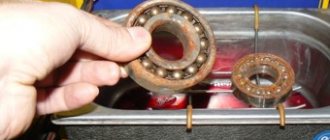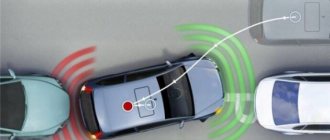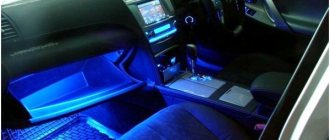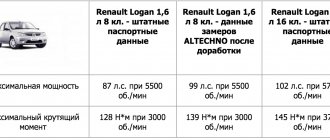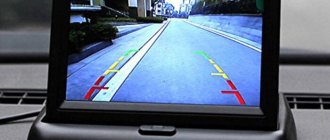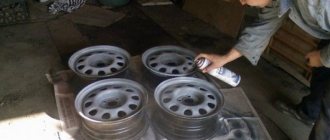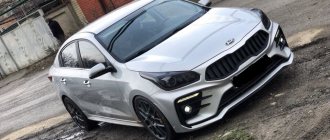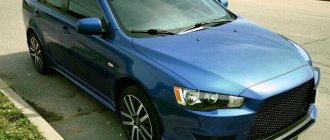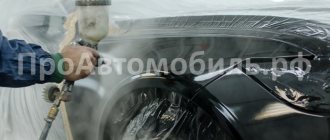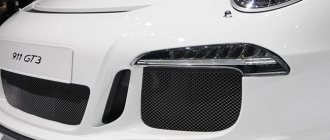The need to equip a trailer
Many enterprises have retrained their production to produce the latest prototypes of coupling devices. But the increase in such vehicles on the roads has led to their equipping with special signaling lights, which are similar to those of automobiles.
Recently, most motorists used the simplest towbar connection; moreover, the connection diagram for the towbar socket and the pinout of the towbar socket were not particularly complex, and motorists rarely touched on this issue.
Then, as a rule, single-color pinout conductors were used, the connection of which could be easily done using a special tester equipped with a loading light. But the situation changed radically after the market was flooded with cheap Chinese products.
Chinese equipment has colored conductors, which, it would seem, should simplify the connection procedure, but connecting the towbar wiring sometimes becomes a real headache for drivers.
Materials for connecting the tow bar
We go to a car store or car market and buy the materials necessary for installation and connection:
socket housing for towbar with cover and rubber sealing ring
We pay attention to the normal fit of all parts of the housing, the absence of play or the pressed brass contacts dangling in the sockets, we check the threads and the condition of the fastening screws on the terminals. polypropylene or metal corrugated hose for insulating wiring harnesses - 2-3 meters, and a couple of dozen plastic mounting clamps for fixing wiring harnesses. silicone gasket, choose color and manufacturer to suit your taste.
General facts
As you know, all electrical wiring in a car is hidden under the trim. The part of the wires that is needed to power the trailer, as a rule, runs from the battery to the dashboard. Then it passes through the entire interior to the rear bumper, and exits at a place called the towbar socket .
As for the trailer, everything is even simpler here.
From the trailer lights, the electrical wiring runs along its bottom and is attached to it using special clamps, usually metal. Next it goes to a connection point called the trailer fork .
Assembling a road train is not a tricky task, but problems are still possible. It is impossible to say exactly where to begin the assembly. Please note that the worst option is switching nodes in the car, which can lead to serious consequences.
Pinout of 7-pin towbar socket in passenger car trailers
To synchronize the light signals, it is necessary to pin out the 7-pin trailer socket and connect it to the vehicle's electrical wiring. The optimal locations for the socket location are technological openings for changing lamps (they have access to the sockets). If the towbar is equipped with a socket box to which all signals are output, it is enough to buy a 7-pin “plug”, connecting it in accordance with the connector diagram indicated in the instruction manual. This method is called standard. Otherwise, use a universal connection method: the wiring is connected directly to the signal circuits if there is no on-board computer in the car. The wires coming from the connector are connected to the electrical circuits of the rear lights.
Connector options and connection diagrams
Initially, the towbar connection diagram had 7 contacts; they are also often called 7-pin connectors. For the first time such an innovation appeared in the United States, and a little later in Europe. Over time, the trailer connectors changed a little and already had 13 contacts, and sometimes all 15.
Also in those days, you could find special connectors that looked more like cables, but today they are used exclusively on narrow-profile types of equipment.
As for the countries of the former USSR, European types of connecting the towbar socket to the car have gained the most popularity here. The trailer fork is equipped with a safe and correct entry in the form of the so-called “male and female”.
This connection option is as convenient as possible, and even with zero visibility it is simply impossible to miss and not get hit.
The American analogue is similar in design to the European one. The differences concern only the electrical wiring of the signal. Also some American connections have 4 pin connectors. 13 pin connectors are installed on both European and American cars.
By the way, today the towbar socket in most cars that are delivered to the Russian Federation has a 13-pin connection. The advantage of this type of connection is that it makes it possible to connect additional elements such as fog lights and fully functional mobile homes.
There are also 15-pin options, which are often used on large tractors.
About installation methods when connecting a tow hitch
The presence of electronics in the vehicle control system allows the use of an electronic coordination unit in the installation of the electrical system for signaling and trailer control. It will monitor and test control signals through a multiplex program.
If the current in the circuits increases, the device will generate an error in signal transmission. Installation and connection to the connector on the tow mechanism is carried out according to a special program with the connection of a matching device in the circuits.
During installation, it is necessary to use a device in the circuits of the machine that will transmit control signals through the matching unit to the towed mechanism, and not through the detachable part in the trailer.
Step-by-step connection guide
- The connection diagram for a car trailer socket has the following order:
- First you need to cut the conductors to the required length, which is indicated in the diagram.
- Carefully clean and tin their ends, and then fix them in the socket.
- Assemble the harness into a corrugation and secure the socket. If you find any problem areas, then they need to be sealed.
- Take the resulting corrugation and stretch it as indicated in the installation diagram.
- Find the connector block and solder the ends, then connect the wires to the left and right lights.
- After all the manipulations, tighten the clamps thoroughly and hide the electrical wiring.
If you are not confident in your own abilities and do not have the necessary knowledge, then the best option would be to entrust this work to an experienced specialist.
A qualified technician knows all the intricacies of such work, and if problems arise, you can contact him again to correct the problem. Incorrect connection can lead to overheating of the electrical wiring and its complete failure.
Important information
The definition of a connector can be described as a combination of plugs and sockets that are connected after the trailer is attached to the hitch.
Hydraulic rolling jack: which one to choose, owner reviews
Category: Tools
Here it is important to pay attention to who is the manufacturer of the towing device and the trailer itself. In some cases, the number of contacts they have is different. Our standard pinout includes 7 contacts. This is a European and domestic manufacturing principle. But if you have an American car in front of you, be so kind as to understand the 13-pin connector. It is also important that the contacts on plugs and sockets are counted differently.
If you need to connect different types of trailers and vehicles, you will need to use a special connection block or adapter. Alternatively, you can make adjustments to the pinout. But this will require deeper knowledge of auto electrics, as well as a detailed study of the design of the car itself.
conclusions
Now all that remains is to properly connect the trailer to the car and enjoy the result. If you notice a new type of socket or a complete disappearance of the models shown here from the shelves, please let us know. And don't forget to share the article with your friends!
When transporting large cargo that exceeds the volume of the trunk of a passenger car, you cannot do without a trailer. In accordance with traffic regulations, such a device must be properly equipped to ensure safety standards. First of all, this requirement concerns lighting devices, namely, side and turning lights, as well as license plate lights. Accordingly, to supply power and control the equipment, it is necessary to combine the electrical circuits of the cargo trailer and the car; this is done using a connecting chip.
Very useful tips
The headline may be loud, but in fact it is true.
All the diagrams presented above are intended for cars that do not have complex electronics.
But don’t forget that modern cars have come a long way. Modern cars have in their design such a device as an electronic control unit. When you turn on the ignition, the ECU goes into testing mode for all circuits in the car. When connecting a trailer, the load on certain lines increases. Your on-board computer, that is, the control unit or ECU, will perceive this as a breakdown. And as a result, you will constantly see an error. In such conditions, you should not count on normal operation of the trailer.
To correct this situation, you need a special adapter or module, whatever you call it. It is mounted as if in the gap between the elements in order to level out the parameters of the electrical circuit. It is called a matching block or, more modernly, Smart Connect.
As a result, we get something similar, as shown in the image below.
Finding a suitable matching block is not a problem at all. Nowadays there are a huge number of them available from different manufacturers. But I strongly do not recommend buying used modules or looking for them at various flea markets.
The blocks are selected based on what kind of trailer you have and the make of the car, as well as what towing device the car is equipped with. Otherwise, you may buy something incomprehensible that you will have to return and buy a normal connector.
An experienced auto electrician can connect everything without a diagram. A multimeter is used for this. But that's a completely different story.
Well, I hope I was able to answer many of your questions. If not, write in the comments and ask.
( 12 ratings, average: 4.75 out of 5)
Did you like the article?
Subscribe to updates and receive articles by email!
We guarantee: no spam, only new articles once a week!
«>
Pinout of 13 pin socket
The advantage is reinforced wiring and the number of connectors:
- 1 – yellow – left direction indicator signal;
- 2 – blue – signal from rear fog lights;
- 3 – white – negative signal for contacts 1 to 8;
- 4 – green – right direction indicator signal;
- 5 – brown – size signal on the right side;
- 6 – red – stop light;
- 7 – black – size signal on the left side;
- 8 – pink – reverse lights signal;
- 9 – orange – permanent positive contact;
- 10 – gray – positive contact during ignition;
- 11 – black and white – negative signal for pin 10;
- 12 – white-blue – reserve contact;
- 13 – white-orange – negative signal for pin 9.
Source: 2shemi.ru
Types of connectors
Before you teach how to connect, you need to decide on the choice of the required outlet. There are 3 types of multi-pin, or scientifically pin, sockets on the market. The number of contacts is 7, 13 or 15. The most common are 7-pin models. Each of them has a clear purpose according to the following table:
In more complex designs with wheel lock sensors and electric brakes. The 15-pin socket is used on trucks.
- left direction indicator;
- right direction indicator;
- rear fog light;
- Weight for contacts 1-3 and 5-12;
- side lights left;
- side lights right;
- brake lights;
- Reversing lamps;
- Power supply 24v;
- (inertia-brake for Reverse lock release);
- (Starting-traction control system);
- (Axle lifteng device);
- (Comon return suply);
- CAN bus;
- CAN bus.
Pinout of 15 pin connector
- 1 – yellow – left turn signal;
- 2 – green – right turn signal;
- 3 – blue – signal from rear fog lights;
- 4 – white – negative contact;
- 5 – black – left hand signal;
- 6 – brown – right-hand side signal;
- 7 – red – brake light signal;
- 8 – pink – reverse signal;
- 9 – orange – positive contact;
- 10 – gray – brake pad signal;
- 11 – black and white – spring brake signal;
- 12 – white-blue – drawbridge signal;
- 13 – white-red – general contact;
- 14 – white-green – Can-H;
- 15 – white-brown – Can-L.
